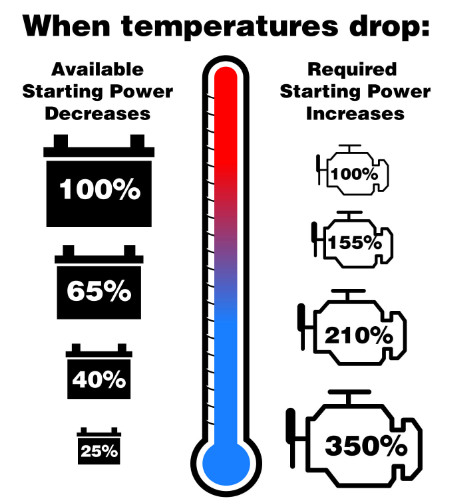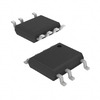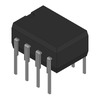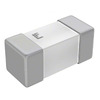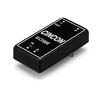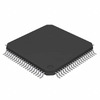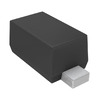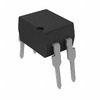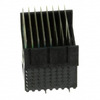on April 26th
599
How Much Do You Know About CCA?
Understanding your car's battery capacity and how it performs under a variety of conditions is important for any car owner, especially when faced with extreme weather challenges. The Cold Cranking Amps (CCA) rating is an indispensable measure for gauging a battery’s capability to start an engine in cold temperatures, particularly at 0°F (-18°C). It assesses how well a battery can maintain a necessary voltage while delivering a specified current for 30 seconds in such extreme conditions. In tandem with CCA, Ampere Hours (Ah) measure a battery's energy storage capacity, indicating how long it can sustain a current before requiring a recharge. This unit is important for understanding a battery’s endurance and overall energy management, especially in regular operating conditions. While CCA focuses on the battery's ability to start an engine during cold spells, Ah provides a broader view of its capacity to deliver consistent power over time, making it equally important for daily use. This article will explore Cold Cranking Amps (CCA) and Ampere Hours (Ah) in detail and provide insights into car battery selection and maintenance.
Catalog
Figure 1: Cold Start
The Cold Cranking Amps (CCA) is an essential metric used to evaluate the starting power of a 12V battery at 0°F (-18°C). It reflects the battery's ability to start an engine in cold weather by maintaining a necessary voltage under load. This measurement determines a battery's effectiveness in severe temperatures, where chemical reactions within the battery are slower and less efficient.
CCA ratings vary due to different testing standards, but they commonly assess the battery's capability to sustain a minimum voltage while delivering a specified current for 30 seconds in cold conditions. The performance of a battery at these low temperatures is a reliable indicator of its starting power in real-world winter scenarios.
A battery's capacity, expressed in ampere-hours (Ah), complements the CCA rating by indicating the total charge a battery can hold. This is measured by the amount of steady current a fully charged battery can output over 20 hours at a temperature of 80°F (about 27°C) without the voltage falling below 10.5 volts. For instance, a battery rated at 100 Ah can deliver 5 amps of current continuously for 20 hours under these conditions. Different types of batteries, such as lithium and lead-acid, vary in how their capacity is defined. While both types calculate capacity based on a 20-hour discharge rate at a constant current, lithium batteries often have additional ratings for shorter durations (1, 5, or 10 hours), reflecting their different discharge characteristics and efficiency at various loads. This granularity helps users select a battery best suited to their specific requirements, considering factors like peak performance durations and energy needs.
A robust CCA rating ensures that a battery can dependably power essential vehicle components—such as air conditioning units, radios, and digital clocks—even under the stress of low temperatures. This reliability is particularly valuable in climates where cold starts are frequent, ensuring that vehicles remain operational when needed most. However, a low CCA rating might mean the battery will struggle with high-demand tasks like activating headlights or initiating the engine start. This can lead to situations where a vehicle fails to start, leaving the driver stranded in potentially dangerous conditions.
For vehicle applications, the required CCA rating varies significantly depending on the type of vehicle. Small cars might need batteries with at least 150 CCA, while more demanding applications, like high-performance vehicles or those operating in extremely cold environments, might require batteries with a CCA rating of around 500. Understanding these needs allows users to choose a battery that will perform adequately in the most challenging conditions, ensuring reliability and safety.
|
Power Supplied
|
Temperature
|
Power Required
|
|
100% (0% Drop)
|
80 Degrees F
|
Normal Power
|
|
65% (35% Drop)
|
32 Degrees F
|
150% More Power
|
|
40% (60% Drop)
|
0 Degrees F
|
210% More Power
|
|
25% (75% Drop)
|
-20 Degrees F
|
350% More Power
|
Chart
1: Battery Starting Power Meter
Ampere-hours (Ah) serve as a crucial unit for gauging a battery’s energy storage capacity, indicating how long a battery can sustain a current before it needs recharging. To delve deeper into ampere-hours, we must consider the ampere, the international standard unit for electric current. Defined as the flow of electric charge (in coulombs) per second across a conductor's cross-section, one ampere means one coulomb of electrical charge is moving through the conductor every second. The coulomb itself measures electrical charge, whereas the ampere measures how quickly that charge is moving, indicating the rate of electrical flow. For example, a battery with a nominal capacity of 100 Ah is expected to continuously deliver 5 amperes over 20 hours in optimal conditions without needing a recharge. However, in practical scenarios, the actual current output can vary due to the battery’s chemical composition, internal resistance, and external factors such as temperature.
Smaller batteries, like those found in mobile phones and laptops, often specify their capacities in milliampere-hours (mAh). With 1,000 mAh equating to 1 Ah, this unit simplifies comparing smaller battery capacities. This specification helps users grasp how long a battery can last under different loads and provides insight into the battery’s endurance during continuous use.
Figure 2: Why Is It Necessary to Convert CCA to AH?
Converting cold cranking amps (CCA) to ampere-hours (Ah) is very important for people who live in cold climates, where the low-temperature performance of the battery is what allows the car to start. CCA specifically measures how well a battery can start an engine in temperatures typically ranging between 30°F and 32°F. This metric is critical because it provides a direct indication of a battery’s initial power output in harsh conditions. Generally, a higher CCA rating suggests that the battery has a robust capacity and is capable of delivering significant power, ensuring reliability when temperatures drop.
While the CCA rating is a key indicator of a battery’s ability to power up an engine in cold weather, it doesn’t provide a complete picture of the battery's overall performance. To thoroughly assess a battery's capacity—the total energy it can store and the duration it can deliver this energy—it is essential to convert the CCA figure into Ah. This conversion process is not straightforward, as it involves understanding both the peak power a battery can deliver in specific scenarios and its sustained energy delivery over time.
The importance of this conversion becomes apparent when selecting a suitable battery for vehicles or devices that operate in extremely cold environments. It is not enough to choose a battery with sufficient starting power. The battery must also have the endurance to function effectively over prolonged periods without frequent recharges. Translating CCA into Ah provides a clearer insight into the battery's energy storage capacity, reflecting how long the battery can last under normal usage conditions after the engine has started.
For example, when evaluating a battery, if you know it has a high CCA rating, you can infer that it will perform well for initial startups. However, by also understanding its Ah rating, you gain knowledge about how long the battery will continue to power your vehicle or device reliably after the startup phase. This comprehensive understanding allows for better decision-making, enabling the selection of batteries that not only have the strength to kickstart engines under frigid conditions but are also efficient in their overall energy management.
We need to understand the relationship between cold cranking current (CCA) and ampere-hours (Ah) to be able to select the correct battery for a specific application and environmental conditions. CCA quantifies a battery's capacity to start an engine in low temperatures—a critical feature in cold climates—while Ah represents the total energy the battery can store and deliver over time, reflecting its overall endurance and efficiency.
Conversion of Ah to CCA for Different Types of Batteries
Starter Batteries: Primarily found in vehicles, these are engineered to deliver intense bursts of power necessary for igniting engines. They excel in providing high currents over brief periods due to their thin plate design, which maximizes surface area for immediate discharge but is less suited for sustained energy output. The conversion factor from Ah to CCA for these batteries typically ranges between 10 and 16 times, depending on the battery's design and materials, which prioritize quick energy release over durability.
Dual-Purpose Batteries: These batteries are versatile, and designed to manage both engine starting and ongoing power supply for accessories when the engine is off. They strike a balance between adequate CCA for engine starts and sufficient Ah capacity for continued energy delivery, making them ideal for vehicles and boats that require dependable power for electronics and other systems. Their Ah to CCA conversion factor generally lies between 8 and 12 times, providing a middle ground between high starting power and endurance.
Deep Cycle Batteries: Optimized for prolonged and deep discharges, these batteries are suited for RVs, marine applications, and renewable energy storage, where consistent power output over extended periods is necessary. Deep cycle batteries feature thicker plates that reduce surface area but increase the material's ability to sustain long-term discharges without significant degradation. The Ah to CCA conversion for these batteries is typically lower, around 4 to 8 times, highlighting their design focus on long-term energy provision rather than immediate high-power output.
Practical Conversion Methods for Estimating Battery Capacity
To convert CCA to Ah in a practical setting, simplified estimations can be employed based on the specific needs and characteristics of the battery:
Direct Division Method: Dividing the CCA by approximately 7.25 offers a quick way to estimate the Ah capacity. For example, a battery rated at 725 CCA would approximate 100 Ah, indicating it can support a 10-ampere load for about 10 hours under optimal conditions.
Multiplication Estimate: For a rougher estimation, especially useful in less conventional or smaller batteries, multiplying the CCA by 0.7 provides an alternative perspective. For instance, a battery with a 300 CCA rating could be estimated to have around 210 Ah capacity.
Employing these conversion methods aids in selecting the most suitable battery for specific vehicles or systems, particularly those operating in colder environments. By aligning a battery’s starting power and energy storage capabilities with the operational demands of the application, users can ensure that the battery will not only effectively start the engine but also reliably provide sustained power. This dual capacity enhances vehicle reliability, ensures performance consistency, and optimizes overall system functionality in various operating conditions. By understanding and applying these metrics and conversion methods, battery selection becomes a more precise and informed process, leading to better overall satisfaction and performance reliability.
|
BCI Battery Group
|
Starting / Cranking
|
Dual Purpose
|
Deep Cycle
|
|
Group 8D
|
-
|
220 Ah, 1450 CCA
|
250 Ah, -
|
|
Group 22NF
|
55Ah, 500 CCA
|
60Ah, 745 MCA
|
55 Ah, -
|
|
Group 24
|
-
|
76 Ah, 840 CCA
|
85 Ah, -
|
|
Group 26
|
50Ah, 550 CCA
|
-
|
-
|
|
Group 27
|
-
|
90 Ah, 900Ah
|
100Ah, -
|
|
Group 31
|
-
|
100 Ah, 1000 CCA
|
120 Ah, -
|
|
Group 34
|
55 Ah, 800 CCA
|
60 Ah, 750 CCA
|
-
|
|
Group 34/78
|
50 Ah, 800 CCA
|
65 Ah, 850 CCA
|
-
|
|
Group 35
|
44 Ah, 720 CCA
|
60 Ah, 740 CCA
|
-
|
|
Group 41 (T65, 54LB)
|
50 Ah, 650 CCA
|
-
|
-
|
|
Group 47 (H5, L2, 55L2)
|
60 Ah, 600 CCA
|
50 Ah, -
|
-
|
|
Group 48 (H6, L3, 66L3)
|
70 Ah, 760 CCA
|
70 Ah, 750 CCA
|
-
|
|
Group 49 (H8, L5, 88L5)
|
92 Ah, 850 CCA
|
90 Ah, 850 CCA
|
-
|
|
Group 51 (51R)
|
-
|
60 Ah, 700 CCA
|
60 Ah, -
|
|
Group 58 (58R)
|
50Ah, 550 CCA
|
-
|
-
|
|
Group 65
|
-
|
75 Ah, 850 CCA
|
-
|
|
Group 75
|
55 Ah, 760 CCA
|
55 Ah, 750 CCA
|
-
|
|
Group 78
|
55 Ah, 760 CCA
|
65 Ah, 800 CCA
|
-
|
|
Group 85/86
|
-, 625 CCA
|
55 Ah, 730 CCA
|
-
|
|
Group 94R
|
-
|
80 Ah, 800 CCA
|
-
|
|
Group 95R (H9, L6)
|
105 Ah, 925 CCA
|
105 Ah, 950 CCA
|
-
|
|
Group 96R
|
-, 600 CCA
|
50 Ah, 600 CCA
|
-
|
|
Group GC2/GC2H (6V)
|
-
|
-
|
215 Ah, -
|
|
Group GC8/GC8H (8V)
|
-
|
-
|
180 Ah, -
|
|
Group GC12 (12V)
|
-
|
-
|
150 Ah, -
|
|
Group U1/U1R
|
35 Ah, 400 CCA
|
-
|
35 Ah, 300 CCA
|
|
Group YTX4L-BS/YTZ5S
|
3 Ah, 50 CCA
|
-
|
-
|
|
Group YTX5L-BS
|
4 Ah, 70 CCA
|
-
|
-
|
|
Group YTX7A-BS
|
6 Ah, 90 CCA
|
-
|
-
|
|
Group YTX9-BS
|
8 Ah, 135 CCA
|
-
|
-
|
|
Group YTX12-BS
|
10 Ah, 185 CCA
|
-
|
-
|
|
Group YTX14-BS
|
12 Ah, 200 CCA
|
-
|
-
|
|
Group YTX14AH/YTX14AHL-BS
|
12 Ah, 210 CCA
|
-
|
-
|
|
Group YTX20L-BS
|
18 Ah, 270 CCA
|
-
|
-
|
|
Group YTX24HL-BS
|
21 Ah, 330 CCA
|
-
|
-
|
|
Group YTX30L-BS
|
30 Ah, 385 CCA
|
-
|
-
|
|
Group YTZ10S
|
8 Ah, 180 CCA
|
-
|
-
|
|
Group YTZ14S
|
11 Ah, 230 CCA
|
-
|
-
|
Chart
2: Cold Cranking Amps to Amp Hours Cross Reference Chart
Modern automotive industry standards require at least one CCA unit per cubic inch of engine displacement, and diesel engines typically require at least two CCA units. Each car manufacturer will specify the required CCA value based on different models and engine configurations.
To ensure that the selected battery meets the starting needs of a specific vehicle, the following factors must be considered:
Engine size: Large engines require a stronger starting current due to their greater internal mechanical resistance. This means that the required CCA value increases with engine size.
Circuit Impedance: If the impedance of the circuit is higher, then more current will be required to overcome these resistances during startup, thus requiring a higher CCA value from the battery.
Figure 3: Factors Affecting CCA Battery Rating
Climate impact: In low-temperature environments, the chemical reaction speed of the battery slows down and the output efficiency decreases. In this case, a higher CCA can help ensure that the engine can be started successfully even in cold weather.
Engine oil viscosity: In cold conditions, engine oil becomes more viscous, which increases engine resistance when starting. Therefore, a higher CCA helps ensure that the battery can deliver enough current to overcome this challenge.
Considering that modern vehicles are increasingly equipped with electronic accessories with high current requirements, such as advanced audio systems, security systems, etc., these devices will increase the burden on the battery when starting. Therefore, even small or medium-sized vehicles may require higher CCA than traditional standards. The number of cylinders in the vehicle also directly affects the required CCA level. Vehicles with more cylinders require a higher CCA than vehicles with fewer cylinders to ensure a sufficient starting current.
We also need to understand the difference between cold cranking amps (CCA) and cranking amps (CA) when selecting a battery suitable for the specific environmental conditions in which it will operate. Both CCA and CA are metrics used to evaluate a battery's output capacity, but they are assessed under different temperature conditions and have unique applications.
Cranking Amps (CA), also known as nominal cold-cranking amps, is the measure of a battery's ability to start an engine at 0°C (32°F). This parameter is particularly relevant in moderate climates or mild marine environments where extreme cold is not a factor. CA essentially measures the battery’s power output under these relatively benign conditions, providing a baseline indication of its starting capability in temperatures that do not challenge the chemical reactions within the battery significantly.
Figure 4: Frozen Car Lacking Starting Power
In contrast, Cold Cranking Amps (CCA) measure a battery’s starting power under more severe conditions, specifically at -18°C (0°F). The CCA value is determined by the battery's ability to deliver a specified amount of current for about 30 seconds while maintaining a voltage above 7.2 volts. This stringent test makes CCA a critical metric for evaluating battery performance in cold environments where lower temperatures can greatly impede the chemical processes necessary for power generation.
Typically, CA is utilized to gauge a battery’s longevity and performance in moderate temperatures ranging from 64°F to 86°F, offering a measure of how well a battery performs under everyday conditions. Conversely, CCA provides insight into how a battery will perform when faced with the extreme challenge of cold weather, ensuring that the battery can deliver sufficient power to start an engine even in freezing conditions.
A battery's performance is not solely dependent on its CA or CCA ratings but also on how it responds to various external factors such as climate variations, overheating, overcharging, or deep discharge cycles. These conditions can alter the chemical makeup of the battery, affecting its overall performance and lifespan. Overheating and overcharging, for example, can lead to accelerated degradation of battery components, while frequent deep discharges can diminish a battery’s capacity to hold a charge.
Maintaining your car battery so that it reliably starts the engine throughout the year involves more than just basic care. By adopting a detailed and systematic approach to battery maintenance, you can avoid the pitfalls of a dead battery and ensure your vehicle is always ready to go. Here are ten enhanced and practical tips to keep your battery in optimal condition:
Thorough Cleaning of Battery Terminals: Corrosion and dirt on battery terminals can impede electrical flow, leading to inefficient charging and power delivery. To prevent this, regularly clean the terminals with a wire brush and apply a corrosion-resistant spray after cleaning. This not only clears existing build-up but also helps prevent future corrosion.
Optimizing Power Usage: Accessories such as lights, entertainment systems, and radios can drain your battery significantly when used while the engine is off. To manage power more efficiently, ensure these are turned off or used minimally when the engine isn’t running. Considering installing devices that automatically minimize power drain when the car is turned off can also be a strategic move.
Ensuring Secure and Tight Battery Connections: Loose connections can cause starting difficulties and may lead to dangerous power surges. Regularly inspect your battery’s connections—tighten the clamps and ensure cables are securely fastened to avoid any disruption in power flow. It's advisable to check these connections as part of your regular vehicle maintenance routine.
Strategic Parking: In warmer months, heat can degrade your battery’s performance. Whenever possible, park your vehicle in shaded or covered areas to protect the battery from excessive heat, which accelerates chemical degradation inside the battery.
Insulating the Battery in Cold Weather: Cold temperatures can drastically reduce a battery’s efficiency. Using a battery blanket or appropriate insulation material around your battery can help maintain its optimal temperature. Make sure the insulation is securely fitted and not in contact with any external heat sources to prevent any risk of fire.
Monitoring Start-Stop Systems: Vehicles equipped with a start-stop system can experience battery issues if the system malfunctions. Regularly check this system and the battery’s response to ensure smooth operation. If anomalies are observed, consult a professional to check if the battery is the cause.
Managing Short Drives: Frequent short drives do not allow the battery to charge fully, which can shorten its lifespan. Where possible, combine short trips into longer journeys to give the battery sufficient time to charge, or consider occasionally driving a longer route to maintain the battery.
Utilizing a Battery Maintainer: For vehicles that are not used regularly, a battery maintainer or a trickle charger is essential. These devices provide just enough charge to keep the battery at its ideal charge level without overcharging, thus extending its life.
Routine Battery Voltage Checks: Regularly testing your battery’s voltage with a multimeter can provide early signs of battery wear and potential failure. This proactive measure allows for timely intervention before the battery fails.
Proactive Battery Replacement: Batteries tend to show signs of wear after several years of use. If you notice sluggish start-up or dimming lights, these could be indicators that your battery is declining. Replacing the battery before it fails not only prevents you from getting stranded but also ensures that your vehicle’s electrical system remains in good health.
The ability to convert CCA to Ah provides a more comprehensive understanding of a battery's capabilities, ensuring that a battery possesses not just the initial burst of power needed to start an engine but also the resilience to sustain performance over extended periods. This insight is invaluable for maintaining vehicle reliability, particularly under challenging conditions, and underscores the importance of regular battery maintenance and proactive management strategies. By adhering to the detailed maintenance tips provided, such as regular cleaning of terminals, optimizing power usage, and ensuring proper charging practices, vehicle owners can significantly enhance the life and functionality of their batteries. This proactive approach not only prevents the inconvenience of unexpected battery failures but also contributes to the overall health and efficiency of the vehicle's electrical system. Ultimately, the knowledge of CCA and Ah and their practical application through maintenance and care ensures that your vehicle remains dependable, safe, and ready to perform, no matter the weather conditions.
Frequently Asked Questions [FAQ]
1. Is a higher CCA battery better?
Yes, a higher CCA (Cold Cranking Amps) rating is generally better because it means the battery can provide more starting power in cold temperatures. However, it should match the vehicle manufacturer's specifications to ensure efficiency and avoid unnecessary costs.
2. What is the best CCA for a battery?
The best CCA for a battery depends on the specific requirements of the vehicle, including engine size and the climate in which it operates. You should follow the car manufacturer's recommendations, which can typically be found in the vehicle's owner’s manual.
3. Is 750 amps enough to start a car?
Yes, 750 amps is typically enough to start most passenger vehicles, including cars and light trucks, especially in cold weather. It's important to ensure that this meets or exceeds the minimum CCA requirements specified for your vehicle's engine size.
4. How to calculate CCA for a battery?
CCA is not usually calculated by the end user but is a specification provided by the battery manufacturer, determined through standardized testing. The test involves measuring the number of amps a new, fully charged battery at 0°F (-18°C) can deliver for 30 seconds while maintaining a voltage of at least 7.2 volts. If you need to estimate or compare, use the manufacturer's data sheet for the most accurate CCA value.
Share:

